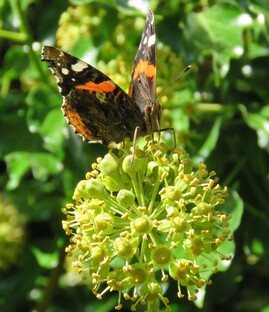 Red admiral on ivy flowers
Red admiral on ivy flowers Ivy flowers about the walled gardens at Sizergh but its this south-facing wall behind the bee-hives which attracts so many pollinators. Walking back to Helsington Church, we find more Red admirals upon pungent ivy flowers and this time I can come close enough to see the proboscis deep amongst the florets in search of nectar.
On 19th September 2016 I came upon a Comma on a ripe blackberry and I spent a long while in a close-encounter, contemplating butterfly and bramble bush. I was struck by the fragility of the butterfly and sharp thorns on bramble stems that might tear its wings. What a contrast between the bright upper wings and the sinister profile the butterfly can make in silhouette, that jagged edge and the disturbing white eye. Fragile or bold and fearsome?
On sunny days a Comma will search for nectar and rotting fruit, prior to hibernation. Cryptic colouring enables the Comma to conceal itself amongst dead leaves. My Sizergh images had me searching that curtain of ivy to distinguish red leaf from butterfly.
Ivy for over-wintering, and for roosting. This fair October day at Sizergh was followed by days of heavy showers when the butterfly will roost in ivy to emerge when the sun reappears.
Butterflies may hibernate: in a garden shed, in ivy, in tree-bark, in a bramble bush, down a rabbit hole. Five species hibernate in adult form: Red admiral, Comma, Brimstone, Small tortoiseshell, Peacock. Other species overwinter as pupae, like the SIlver Washed Fritillary that hibernates in tree-bark.
The National Trust has an item on how to spot hibernating butterflies.
https://www.nationaltrust.org.uk/features/how-to-spot-hibernatin…
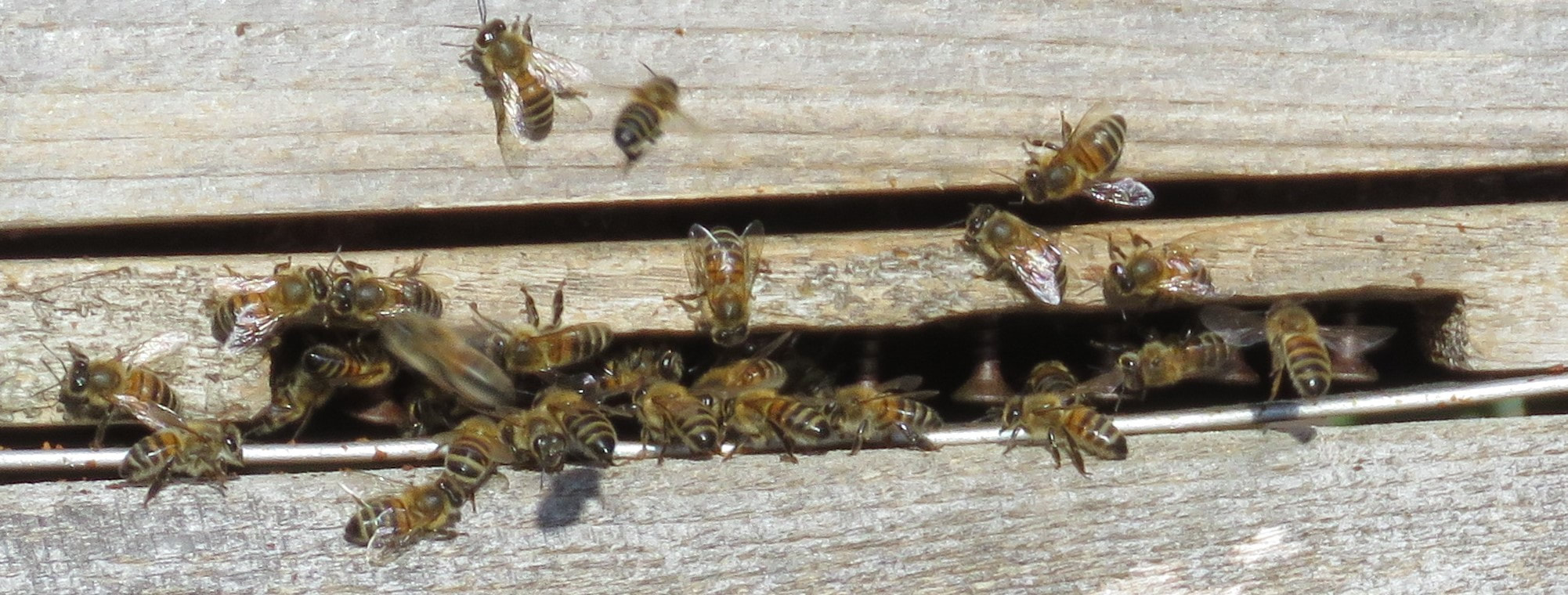
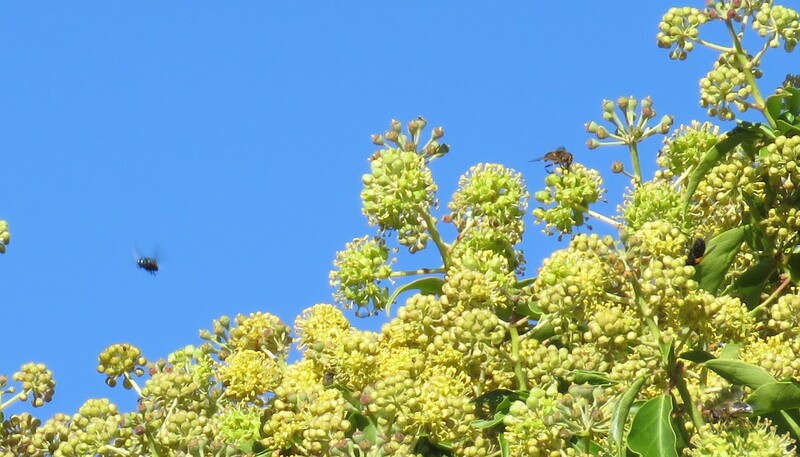
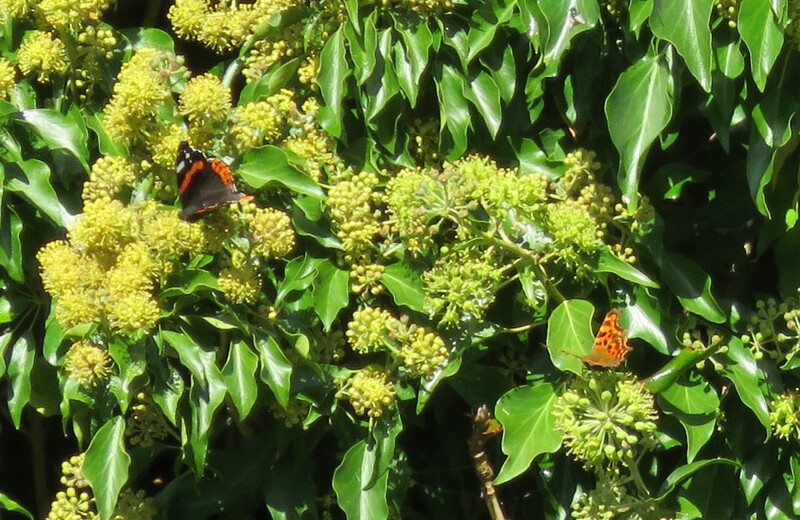
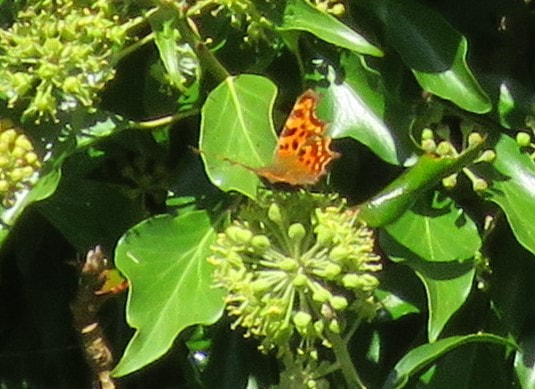
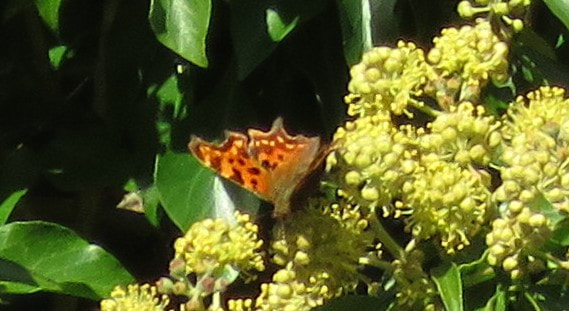

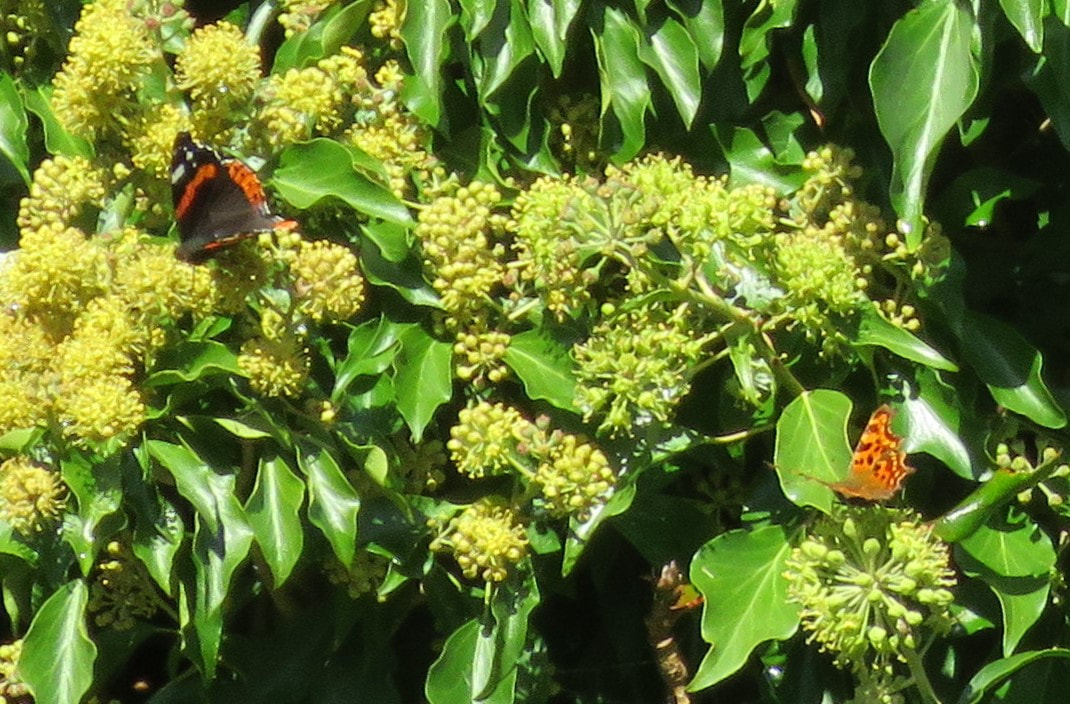
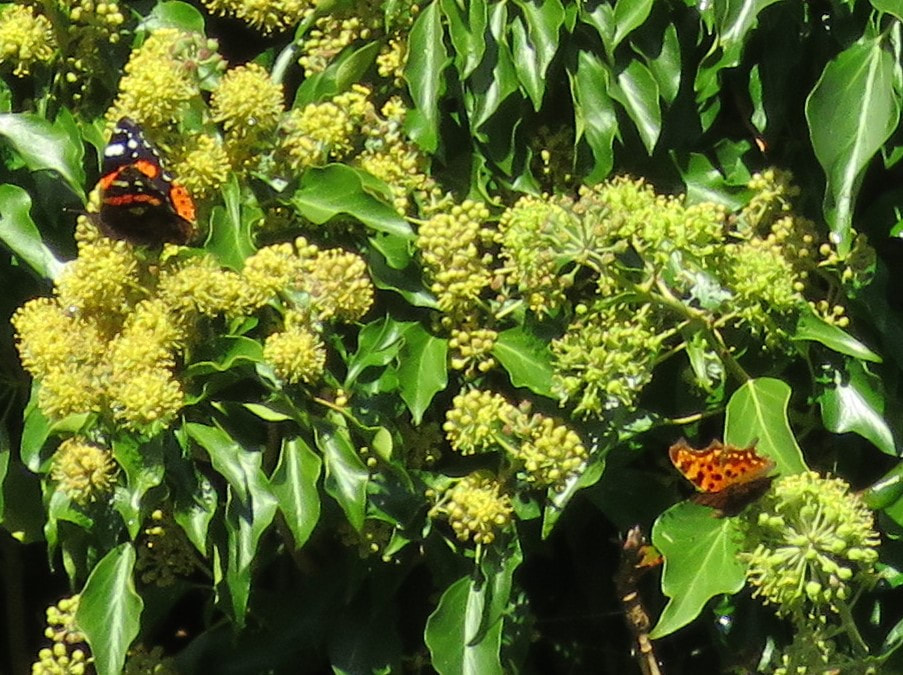
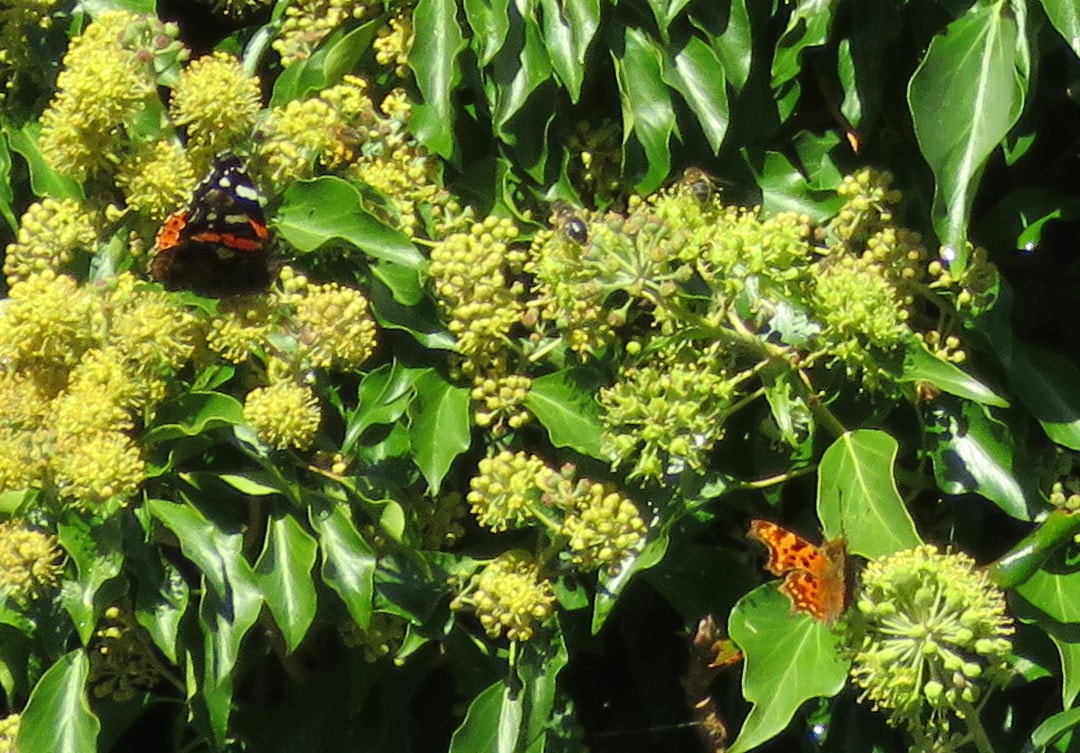
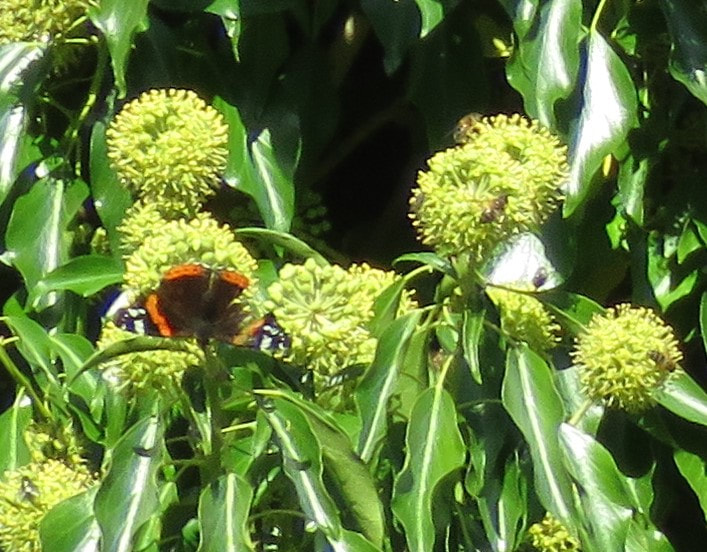
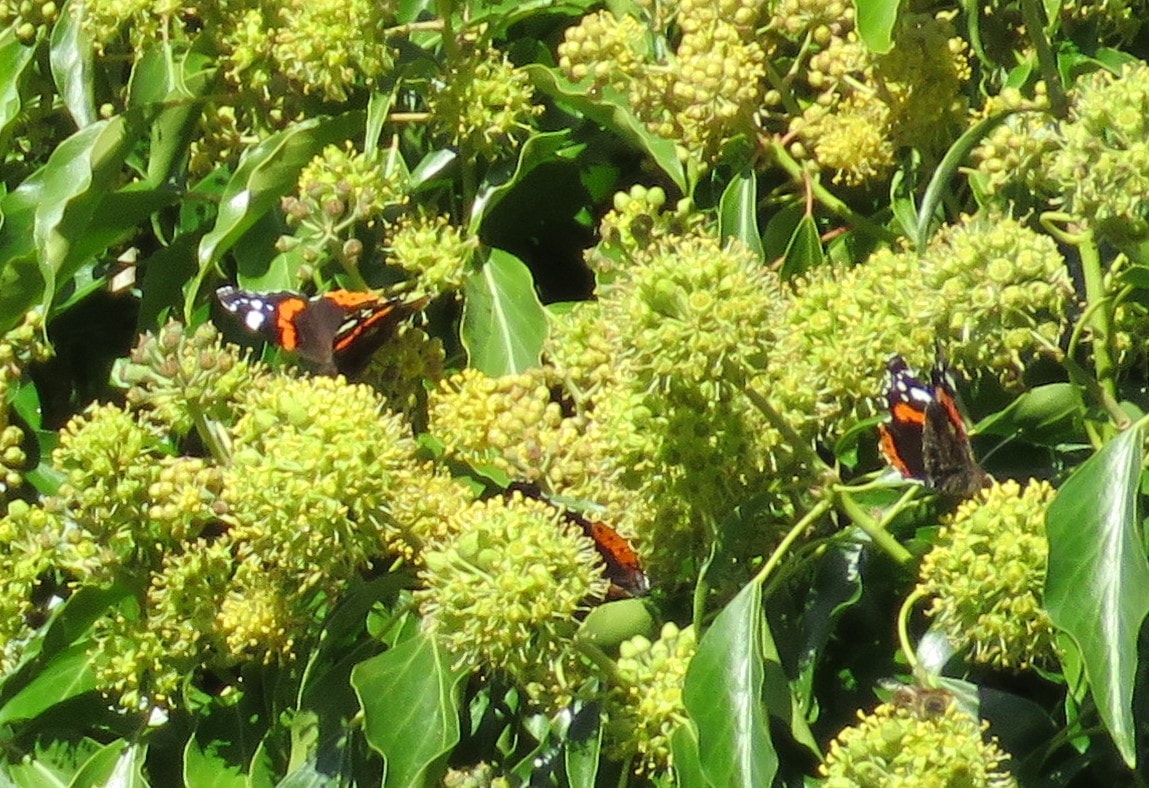
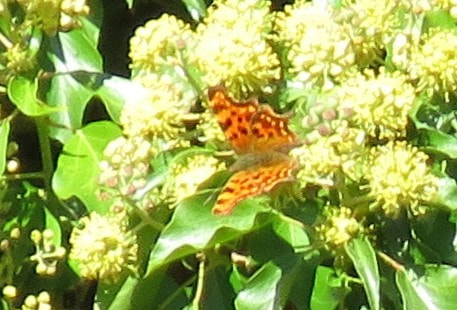
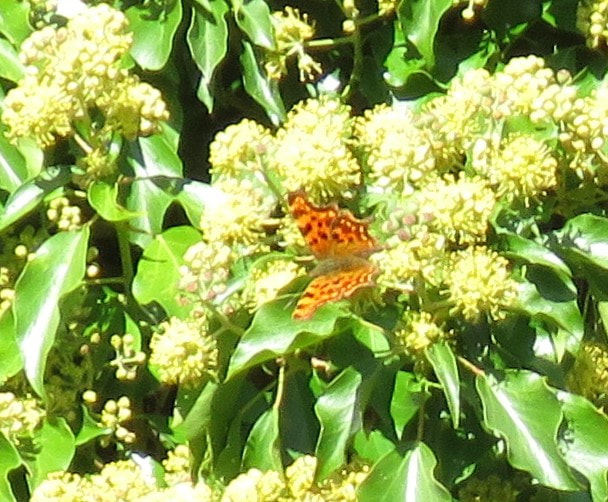
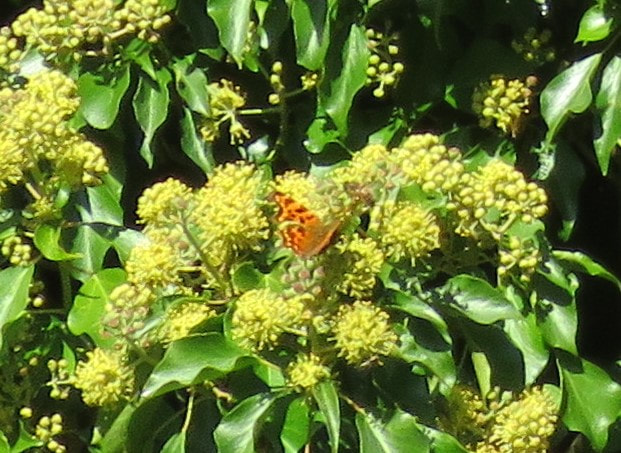
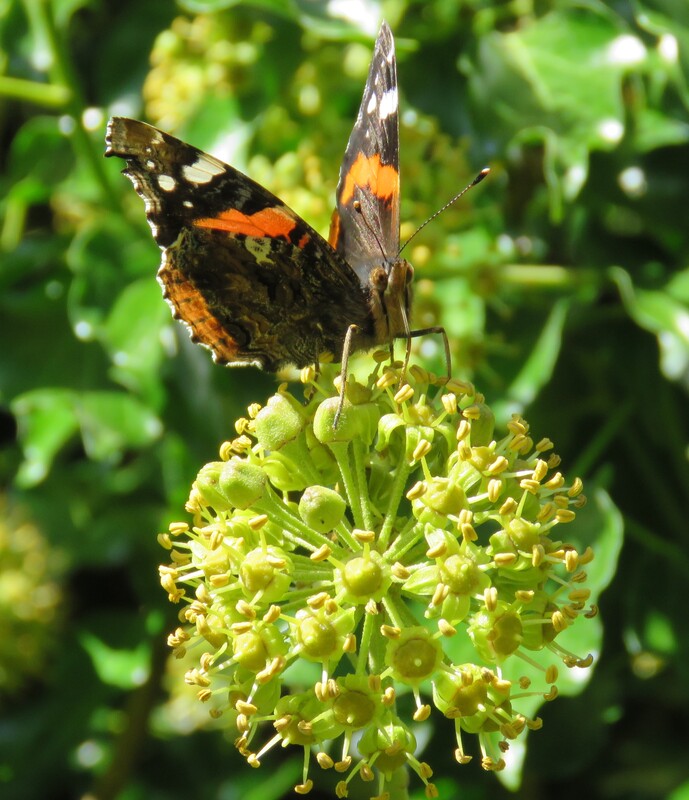
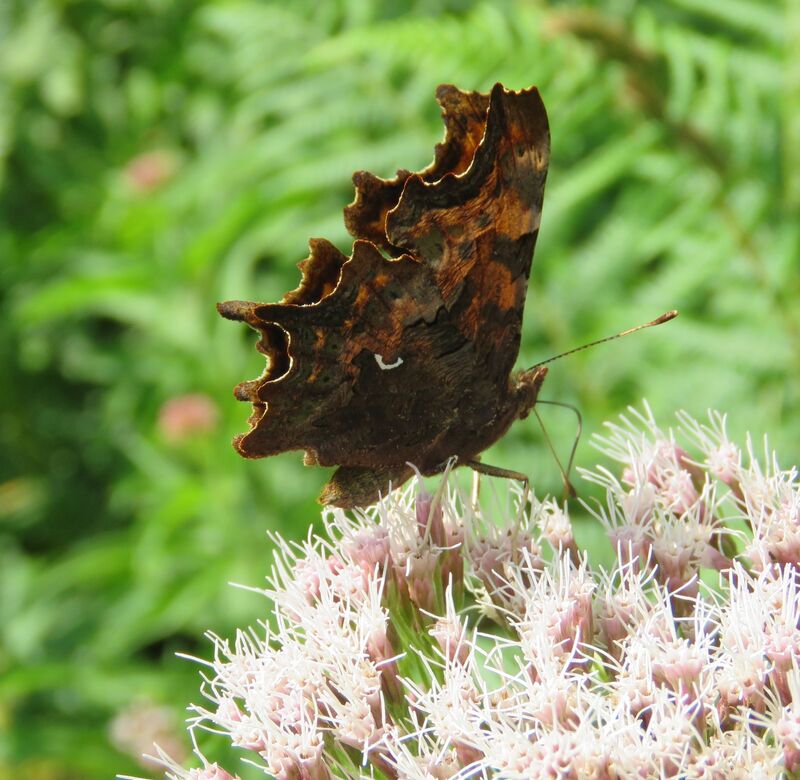
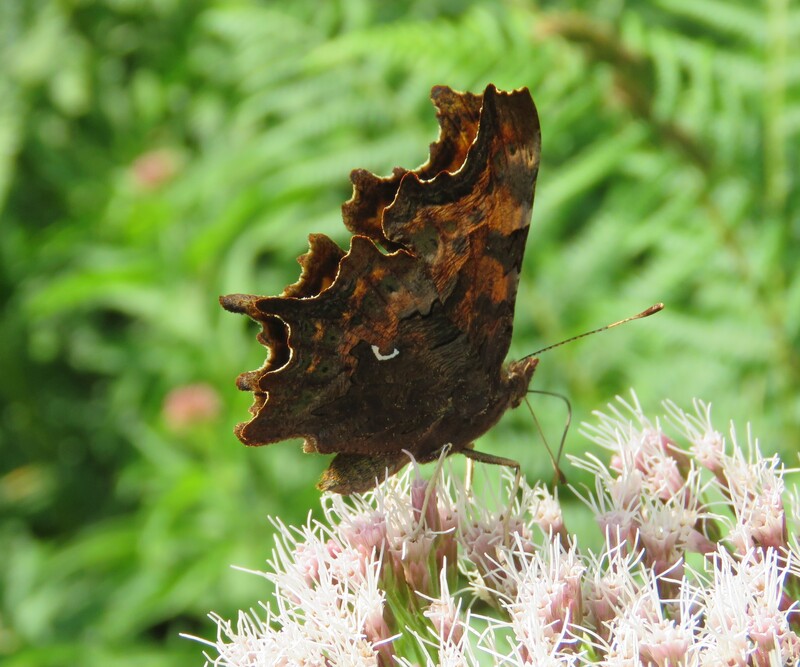

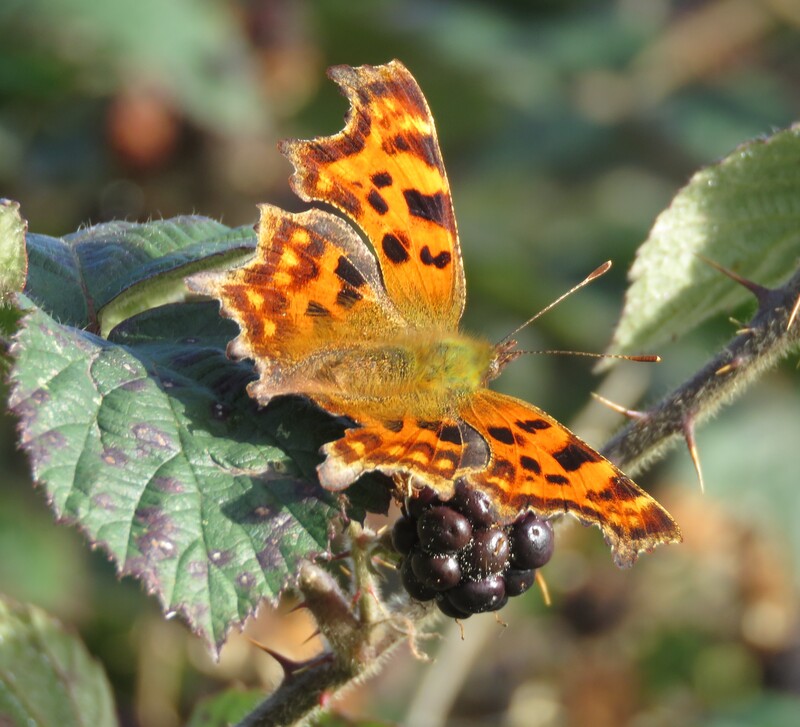
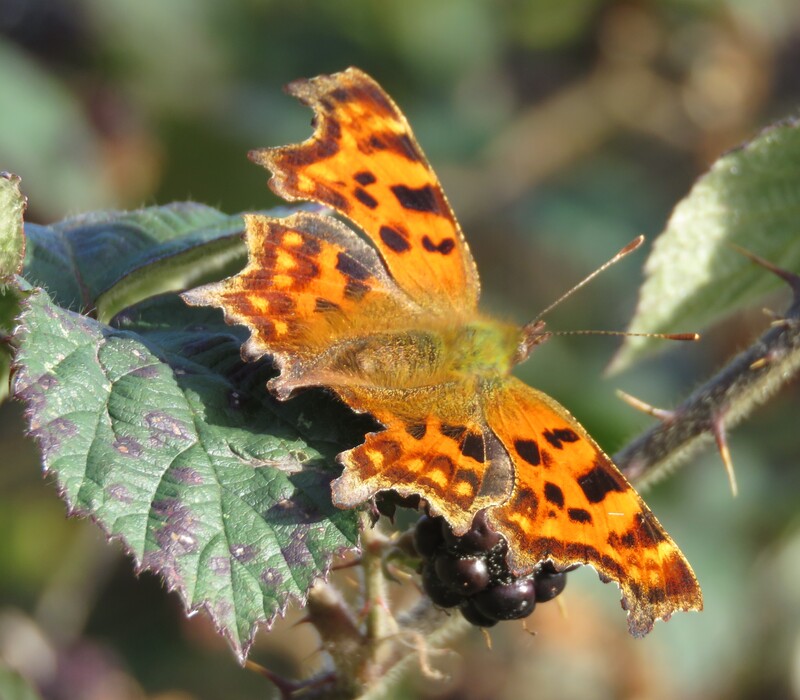
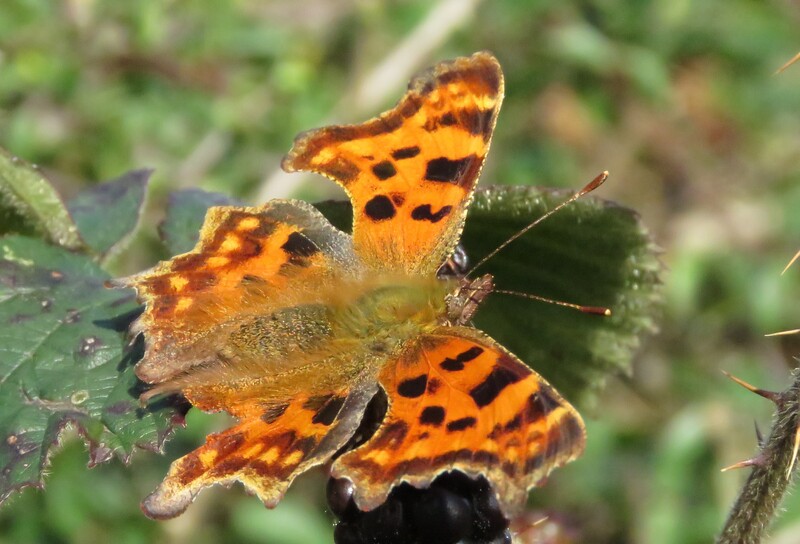
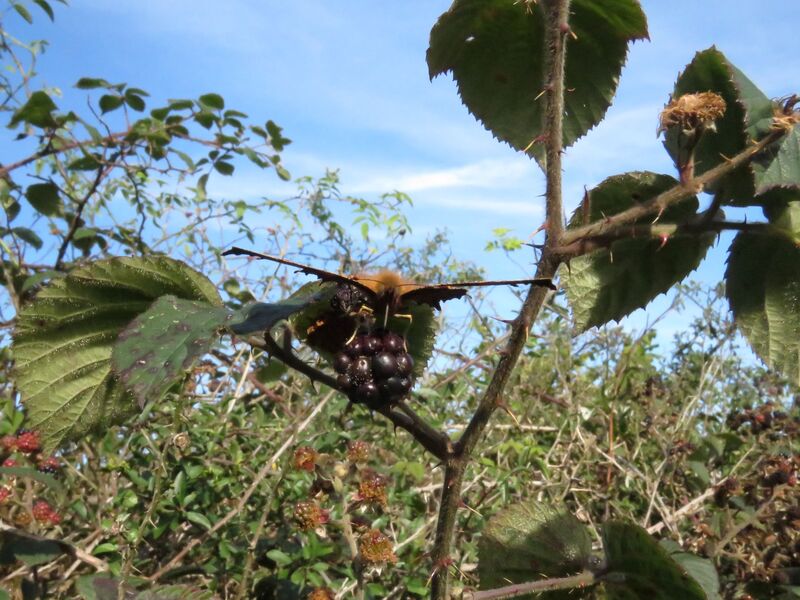
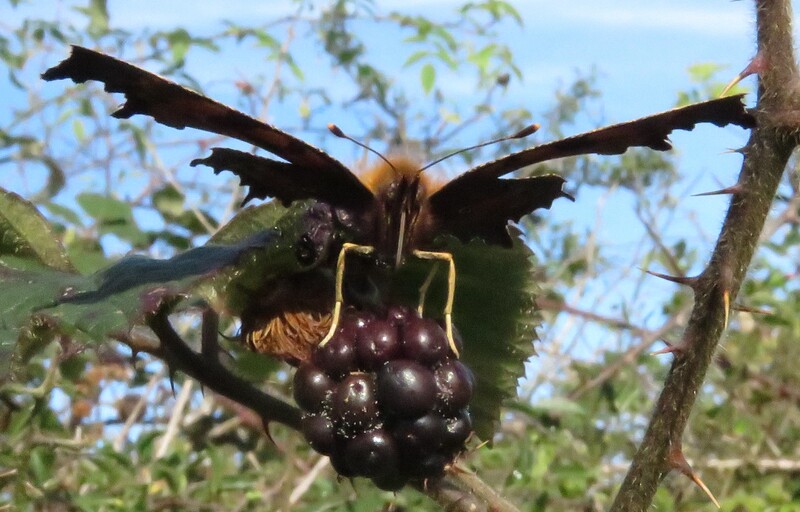
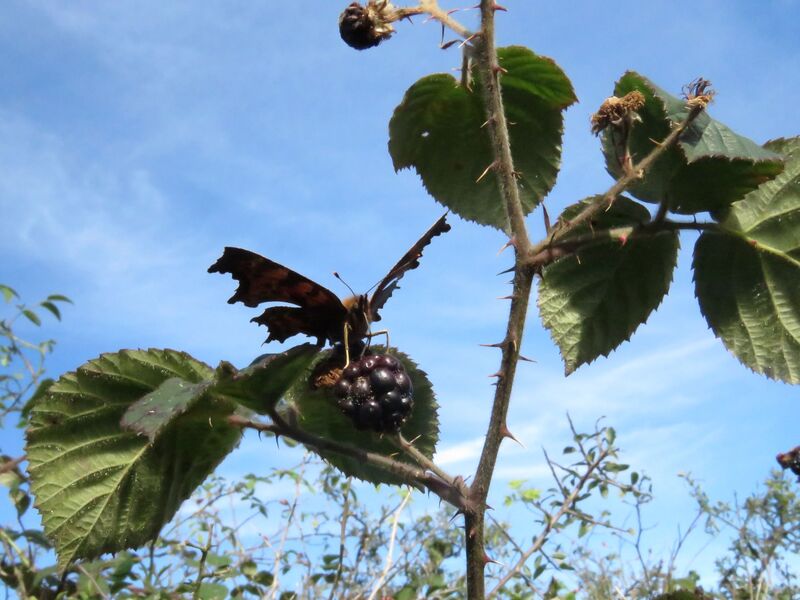
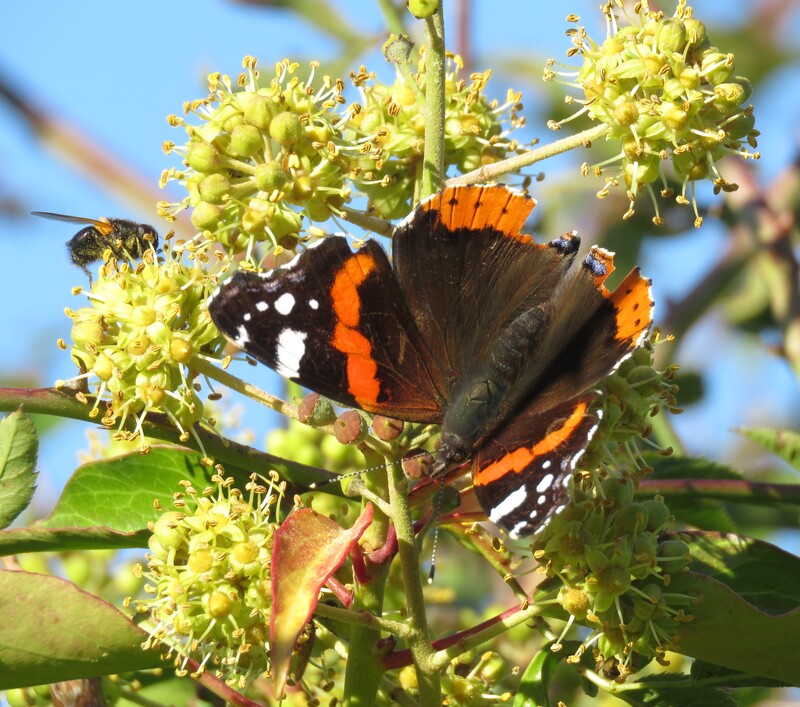
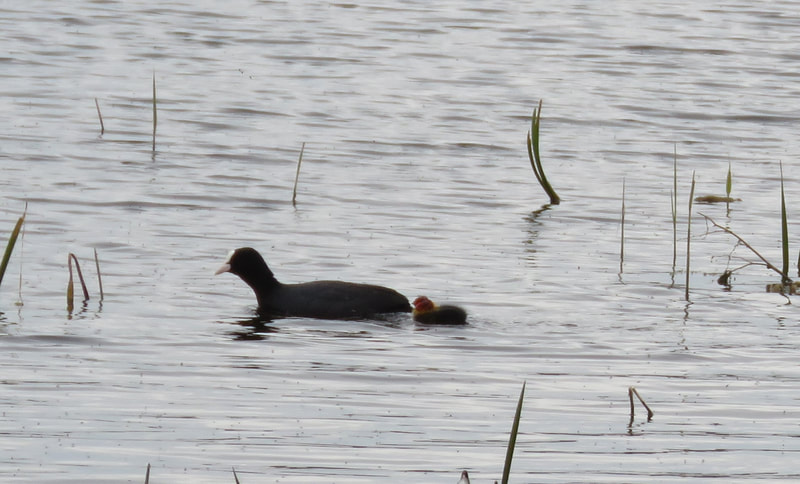
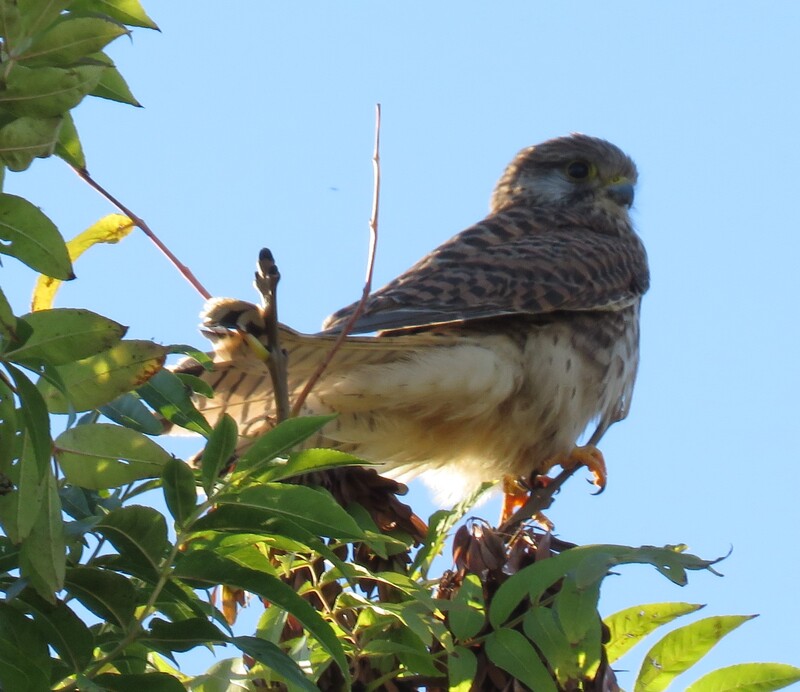
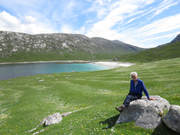
 RSS Feed
RSS Feed